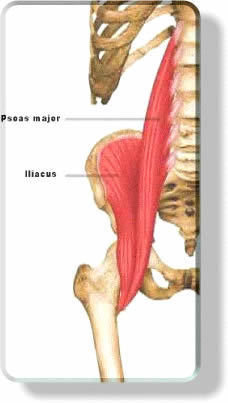[quote]manowarrior wrote:
[quote]BReddy wrote:
[quote]manowarrior wrote:
I’ve done the goblet three times today already; feels great. Weird though, by intuition I would have thought that this would actually contribute in making the psoas even tighter, but the opposite seems to happen. This might very well be the solution I’ve been looking for, even better, it doesnÃ??Ã?¸t aggrevate the hip pain in any way, maybe because of the low poundage used. Thanks alot, I’ll let you know how things turn out. [/quote]
Stop stretching your hip flexors. Often times pain with hip flexion is caused by a weak psoas, not a tight one. The psoas helps the hip joint stay nice and snug in the the socket and when it is weak the femur tends to move around in the socket when it shouldn’t. Stretching the hip flexors helps encourage this right now.
The likely reason the goblet squat is helping is because when you are in that deep of a squat you are actively recruiting the psoas and not much else in the hip flexor category. That is, you are actually strengthening and activating them = good idea.
Two things to do (in this order), take a tennis ball/lacrosse ball/baseball/golf ball, throw it under the glute of the side of the hip that is bothering you, and roll SIDE TO SIDE just like you would foam rolling (see picture).
Next, perform a wall psoas hold (I’ll attach another picture in another post). Unlike the picture I’ll show you though, make sure your entire back (lower especially) is FLAT against a wall. Make sure the knee is above 90 the whole time. If this is harder on the affected hip, this is likely a major cause why your hip is bothering you. Try to go for 30 seconds at least. If that’s easy, use your hand to push down as resistance.
Try the goblet squat after doing the above. It will likely feel even better.
Other things: try to limit sitting as much as possible, stop stretching your hip flexors for a while, stop performing box squats and such until your pain has subsided. If you keep doing things like squatting while it’s painful you are only encouraging inflammation which is going to make getting rid of your pain hard.
Let me know how this goes, hope it’s helpful!
[/quote]
This is exactly what I said to my physio, I told him that the strecthing, I had been doing up to the point where I sought him out, was aggrevating the pain rather than easing it. As mentioned earlier I have had a hard time going much deeper than parallel on the squat, maybe over the years this has led to a muscular inbalance because the psoas was never proporly trained. If this is the case, then I am defeneatly gonna train the hip flexors explicitly from this time on. Thanks alot, I will keep you updated on this!
One more question, while I have your guy’s expertise; on the goblet squat it feels as if my hips are reluctant to go down much deeper than my than parallel because of the tension in the inner thighs, is this somehow linked to weak hip flexors aswell?
[/quote]
The adductors are also hip flexors. So, if the psoas (a hip flexor) isn’t working properly they could be trying to pick up the slack as well. This could cause them to become overactive/tight/stiff.
As with the traditional thought of hip flexors, don’t bother stretching them either though. This might even give you pain too. The tight/stiff hip flexors/adductors are a symptom of the psoas not working properly. You don’t give a cancer patient caffeine because of their fatigue (symptom), you try to get rid of the tumor (cause / psoas).
Remember though, make sure you are only training that hip above 90 degrees of flexion. Get rid of anything that trains that leg where it isn’t flexing all the way. For example, using the elliptical would be a horrible idea.
And take your time progressing. Often times just trying to hold the hip above 90 is a serious amount of work for most people.
Also, if you’re barefoot, sitting in a full squat for 30 seconds or more can be a ton of work for most people as well. They’ll often nearly fall backward. Remember that if you’re holding a weight in front of you you’re actually making the movement easier and taking some of the work the psoas should be doing out of the movement. This is my long way of saying working to where you can just sit in a toddler esque squat, barefoot with no weight, is often the way to go.
Hope this helps; keep us updated.




